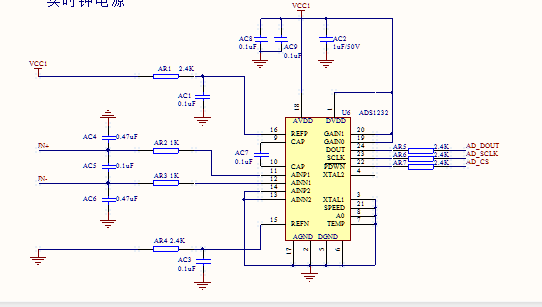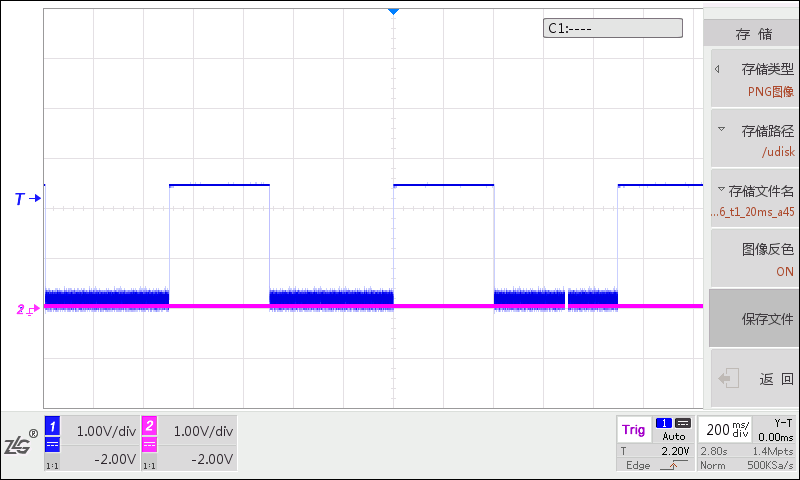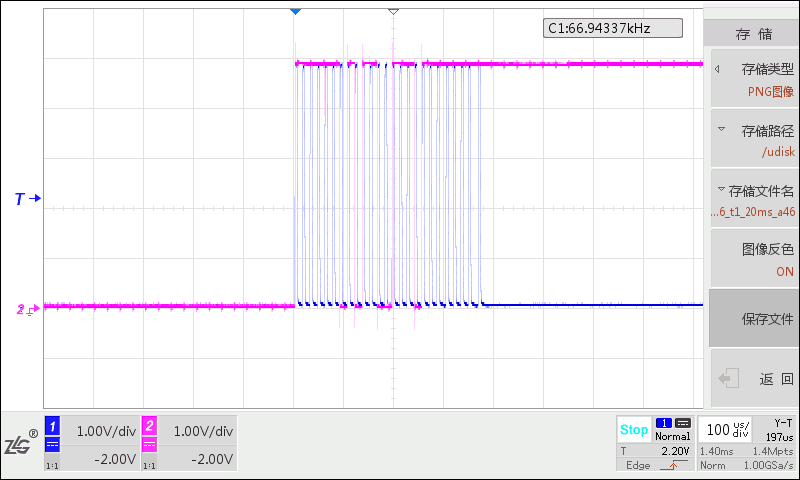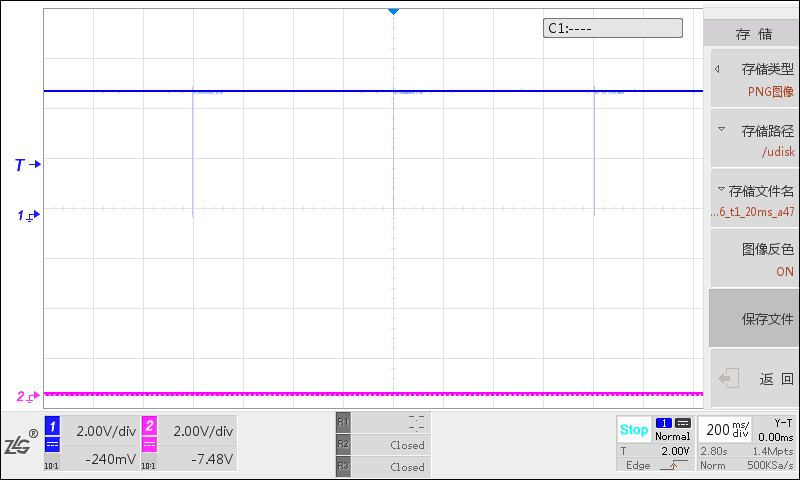Our customer used ADS1232 in their pressure sensor since 2014. Recently, the design has been changed (circuit design of ADC have not changed too much, and the timing of data reading has not changed), but ADS1232 work intermittently now.
1.the circuit design of ADC before
2.the circuit design of ADC now
3.The waveform of 9,10 feet now(Oscilloscope 1CH is connected to CAP of ADS1232, 2CH suspended)
4.Timing of ADS1232(same as before)(Oscilloscope 1CH is connected to the SCLK of ADS1232, and 2CH is connected to the DOUT of ADS1232)
PS:
1. the VCC of ADS1232 is 4.85V
2.check the AC7 between 9,10 feet that capacitance is 110 nf






